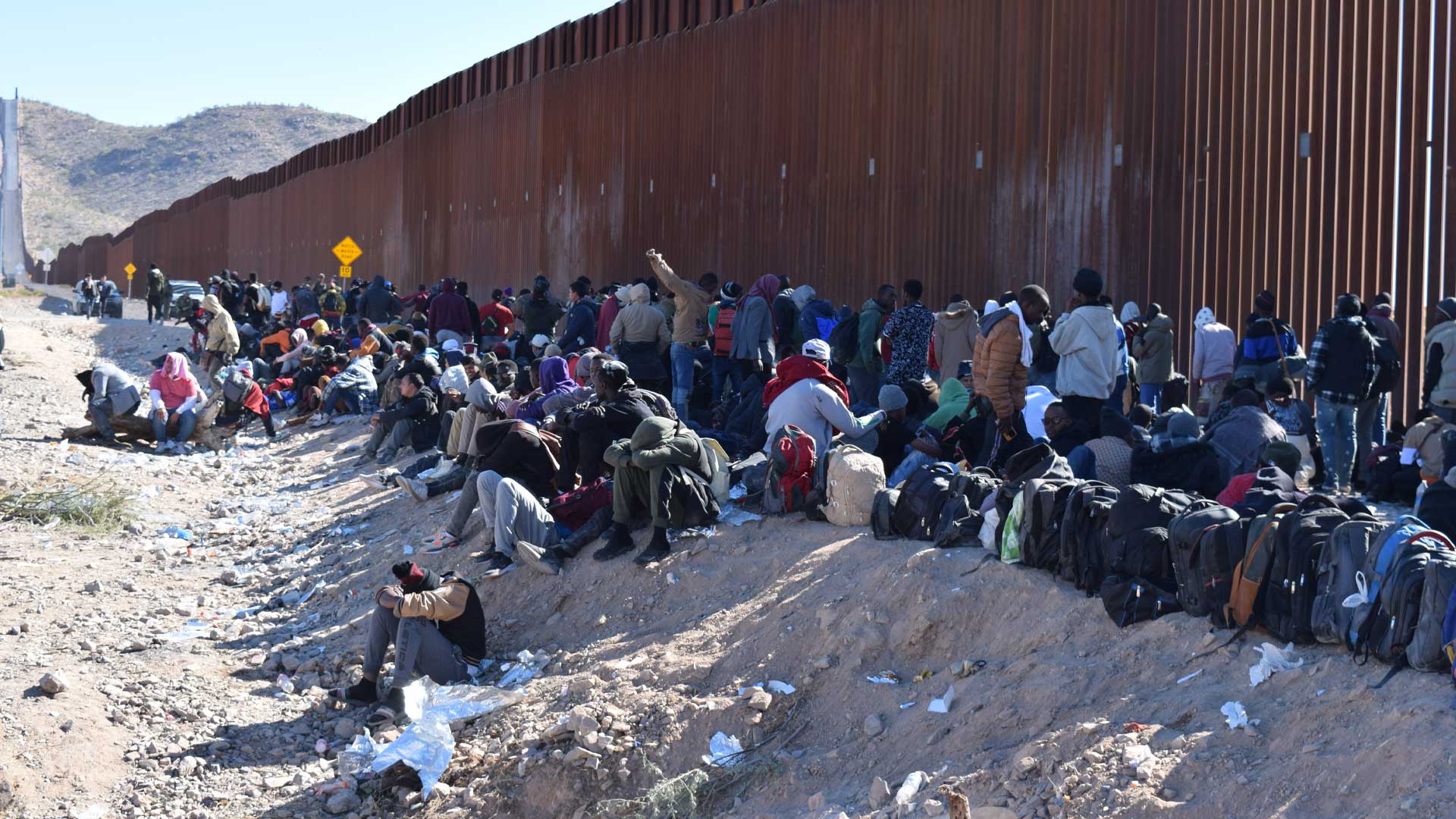 Border Patrol process hundreds of migrants on Dec. 5, 2023. Many are from African countries — Senegal, Guinea and Mauritania — and a smaller number are from India and Central and South America. Many say they came through a cut in the border wall.
Border Patrol process hundreds of migrants on Dec. 5, 2023. Many are from African countries — Senegal, Guinea and Mauritania — and a smaller number are from India and Central and South America. Many say they came through a cut in the border wall.The report from the Migration Policy Institute says Yuma and Tucson sectors experienced an uptick in migrant arrivals after years of lower activity, leaving them with inadequate staffing and resources.
The report analyzes changes in policy and at the U.S.-Mexico border and makes recommendations to improve border management, including creating: multiagency border processing centers, directing migrants without U.S. ties to cities that have more capacity, much like what is already done with refugees, and recognizing immigration courts and asylum functions as part of border management and resourcing them accordingly.
Ariel Ruiz Soto with the Institute says that Mexican cartels route migrants to where border officials are most overwhelmed, and mislead migrants to believe if they cross in a family unit they are more likely to get through, which is part of why Arizona’s U.S.-Mexico border has seen a rise in family arrivals and diversity of nationalities.
“When they see that Tucson is not able to keep up with the processing of migrants, or at least that most migrants are being released, then that’s when the smuggling groups take advantage to advertise it as: If you’re a family and you go through Tucson, you’re likely gonna go through,” he said.
Ruiz Soto says this message is false because many of these migrants will ultimately be removed from the country.
The number of family members and unaccompanied minors crossing the border in the Tucson Sector more than quadrupled in the last fiscal year.
“I think that’s a very unique Arizona story,” Ruiz Soto said. “A sector that had been focused primarily on single adult men, that could remove migrants within hours, is now one of the sectors that receives the most families and has to have the largest detention capacity on the border because of the different dynamics that happen.”

By submitting your comments, you hereby give AZPM the right to post your comments and potentially use them in any other form of media operated by this institution.